A look at the restoration of NC’s Cape Hatteras Lighthouse as it returns to its 1890s glory
In its 154 years, the Cape Hatteras Lighthouse in Buxton has saved countless mariners from disaster in the treacherous waters where the Gulf Stream clashes with the Labrador Current and tries to shove southbound ships onto the hidden sandbars of Diamond Shoals.
Occasionally, the elegant brick tower herself has needed rescuing.
The National Park Service is six months into one of the biggest restoration projects it’s ever done on what’s been called “America’s lighthouse,” one of the most recognizable structures along the East Coast and a favorite destination for some of the nearly 3 million people who visit the Cape Hatteras National Seashore each year. When the project is finished, the lighthouse and grounds will look more like they did in the 1890s, when the flame of an oil lantern multiplied by a thousand glass prisms cast a comforting light from a remote island to ships on a dark sea.
Park officials and contractors offered this update on the work during a media tour on Monday.
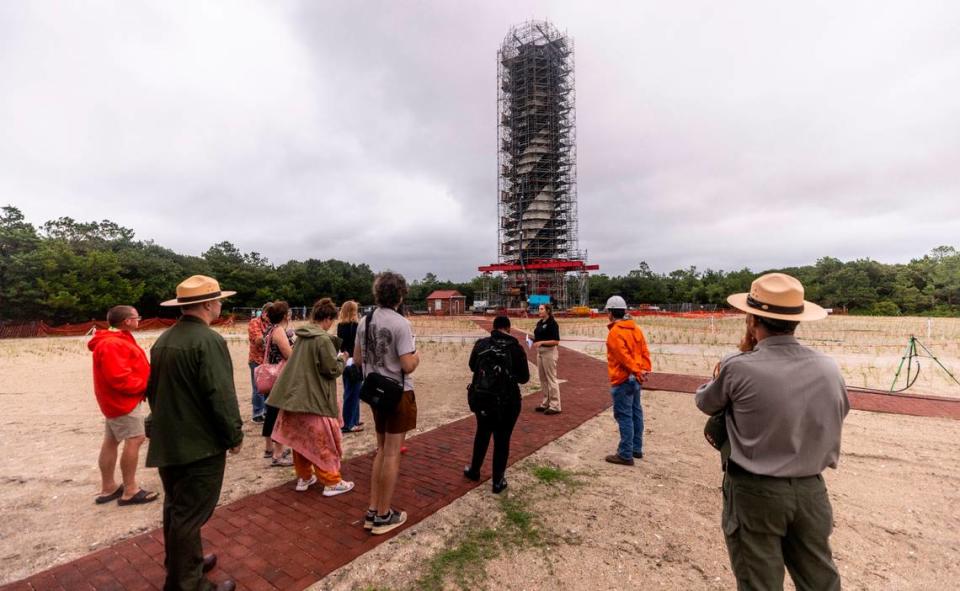
What’s being done to the Cape Hatteras Lighthouse?
Safety first.
From its construction in 1870 until the 1930s, according to N.C. Sea Grant and the Park Service, the lighthouse had full-time keepers who lived near the tower and kept the lamp burning at night, but also spent their days cleaning, painting and repairing the structure that’s exposed to some of the harshest conditions in nature. But by 1970, oceangoing vessels had radios and electronics, and the Cape Hatteras Lighthouse was opened to the public, becoming more notable as a tourist stop than a navigational tool.
A 2016 report on the status of the historical structure found it was only in fair condition overall, had serious maintenance issues and a number of its original features had undergone major changes, including the removal of its signature first-order Fresnel lens.
Though the site remains open to visitors, the lighthouse was closed to the public in 2020 because of the COVID-19 pandemic and has remained closed to climbing as engineers, architects and other specialists began preparing for the renovation project.
Work on the lighthouse will include:
▪ Repairs to deteriorated masonry, such as replacing up to 40,000 of the estimated 1,250,000 bricks used to build the lighthouse;
▪ Repairing or replacing rusted or broken metal components, such as the original cast-iron spiral stairs that lead visitors to the top of the lighthouse, and the gallery around the top;
▪ Repairs to the windows, the lantern and the marble flooring;
▪ Replacement of missing architectural features such as the original iron pediments over the windows and two wooden doors that were on the interior of the lighthouse;
▪ Removal of interior and exterior paint, including the two white and two black spiral stripes on the outside, and repainting with a finish that allows the brick to breathe and doesn’t trap moisture;
▪ Installation of a near-exact replica of the first-order Fresnel lens that once gleamed in the lighthouse, one of the first two installed in the U.S. of that size and quality. (What’s left of the original, which was vandalized after the lighthouse was essentially abandoned for years, is on display at the newly reopened Graveyard of the Atlantic Museum 10 miles south in Hatteras.)
At the lighthouse on Monday, Park Service officials said the changes would be as historically accurate as possible, while also using materials that are more resistant to sun, salt, water and wind than the originals.
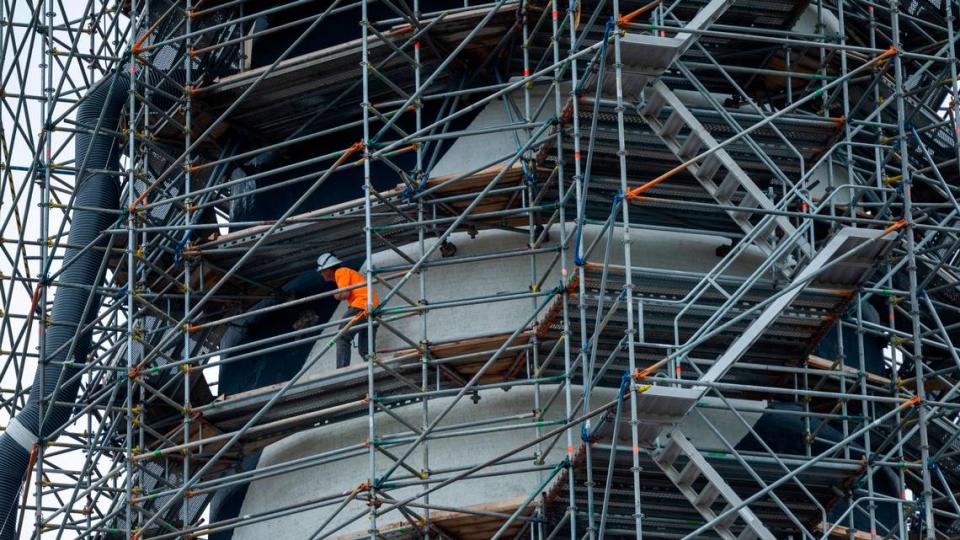
What’s happening with the other buildings?
Near the lighthouse, in exactly the same configuration as when they were built, are six other historically significant structures including the oil house, the principal keepers house and the assistant keepers house. The landscape around the buildings will be brought back closer to the original with the planting of native sea oats, Indian paint and other flora, as well as iron fencing that replicates the original, replacing modern vinyl fencing installed after the lighthouse was relocated to avoid ocean erosion.
Park Supt. Dave Hallac said a plan is still being crafted to re-install the granite blocks that served at the lighthouse’s original foundation that were dug out of the sand after the tower moved and were engraved with the names of former lighthouse keepers and assistant keepers. The stones had been placed on the new site as seats in an amphitheater, but Hallac said visitors didn’t use them enough so they’ll be incorporated into a reconfigured pathway through the site to increase their visibility.
“That’s the human element,” Hallac said, noting that many of the keepers’ names live on in their descendants who still populate the area and visit the site regularly.

Did the 1999 relocation cause this damage?
The Cape Hatteras lighthouse was famously moved over 23 days in June and July 1999, when it was cut from its granite foundation, lifted onto rails and rolled 2,900 feet inland. While controversial, the move was considered the most permanent solution to the problem of ocean erosion; though it moved forward and back, the ocean had been within 50 feet of the base of the lighthouse at least twice before the structure was relocated.
The National Park Service monitors small cracks in the lighthouse that resulted from a lightning strike in April 1879, but says the move didn’t worsen the cracks or cause new ones.
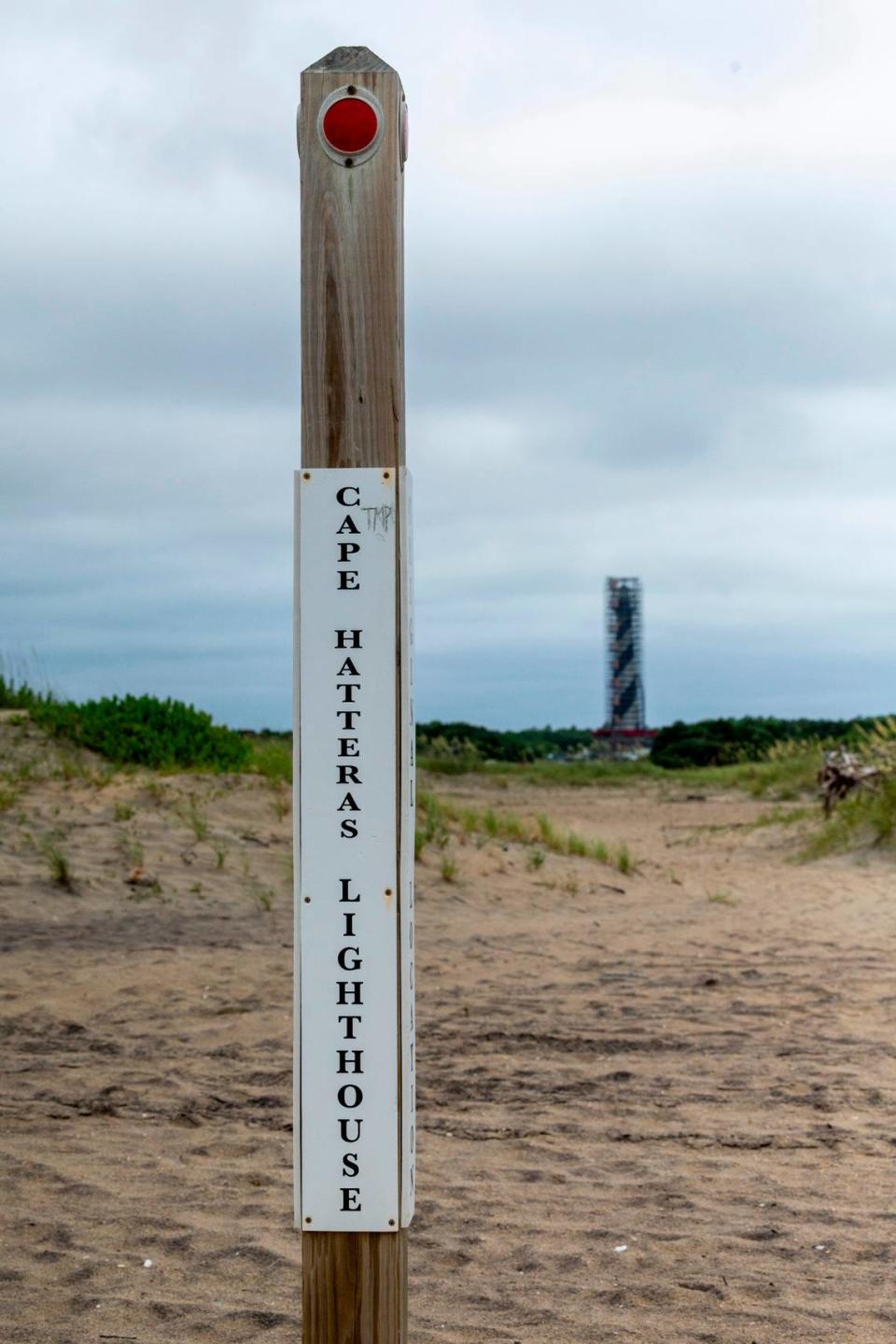
When will the lighthouse reopen for climbing?
Work is proceeding on schedule so far, and park officials say the lighthouse will reopen to climbing by Sept. 1, 2026.
Will hurricane season affect the restoration?
The Park Service said Monday that planners built time into the restoration project to account for stoppages from hurricanes, even if 2024’s Atlantic hurricane season turns out to be one of the busiest ever, as predicted.
Massive scaffolding built on the inside and outside of the lighthouse is designed to withstand winds from up to a Category 2 hurricane. If a more powerful storm threatens the site, the company that installed it would likely take down as much of the scaffolding as possible before the storm’s arrival, the park said.
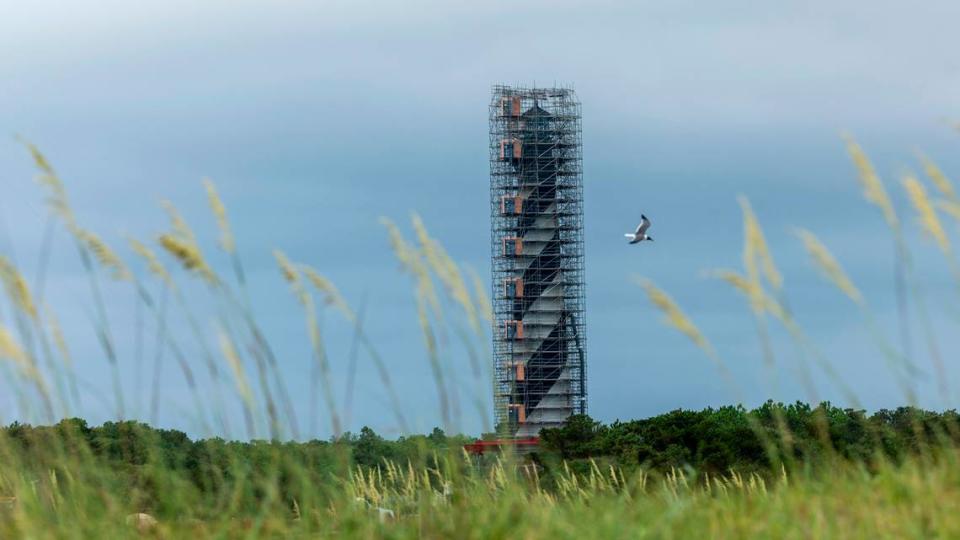
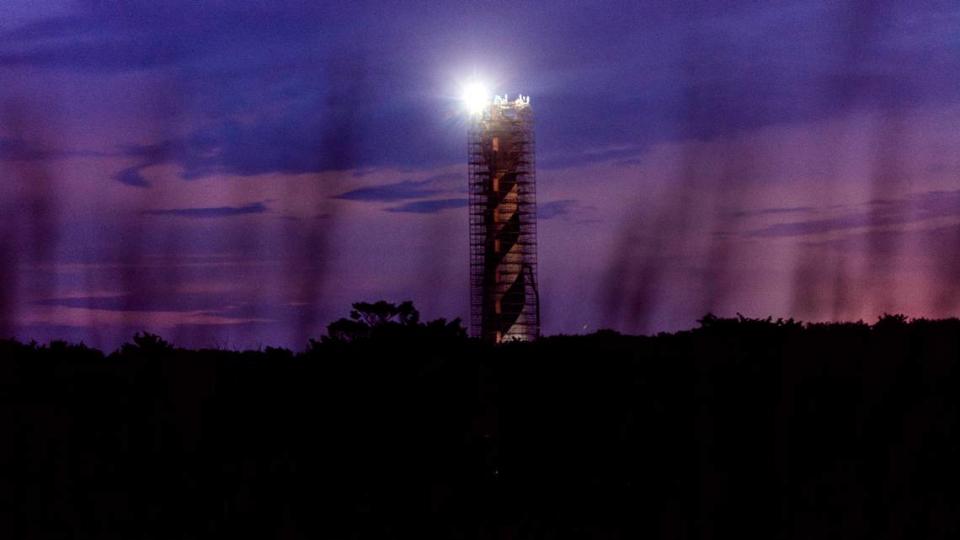
What’s the cost of the restoration?
The full project is expected to cost $19.2 million. By comparison, moving the lighthouse about a half-mile away from the ocean cost about $12 million in 1999, or about $22.4 million in 2024 dollars.
The Outer Banks Lighthouse Society says Congress approved $155,000 to build the lighthouse in 1867, making it one of the most expensive lighthouses on the East Coast.
Park Service documents indicate it was built using the labor of about 100 local workers who were each paid $1.50 per day.
For regular updates on the restoration, go to the Cape Hatteras Lighthouse’s web page.
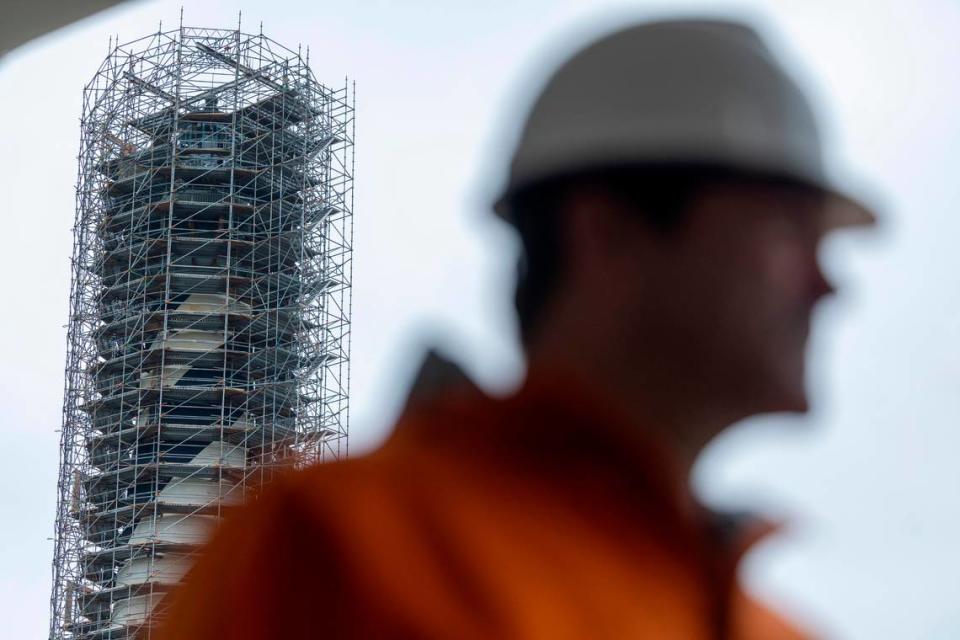
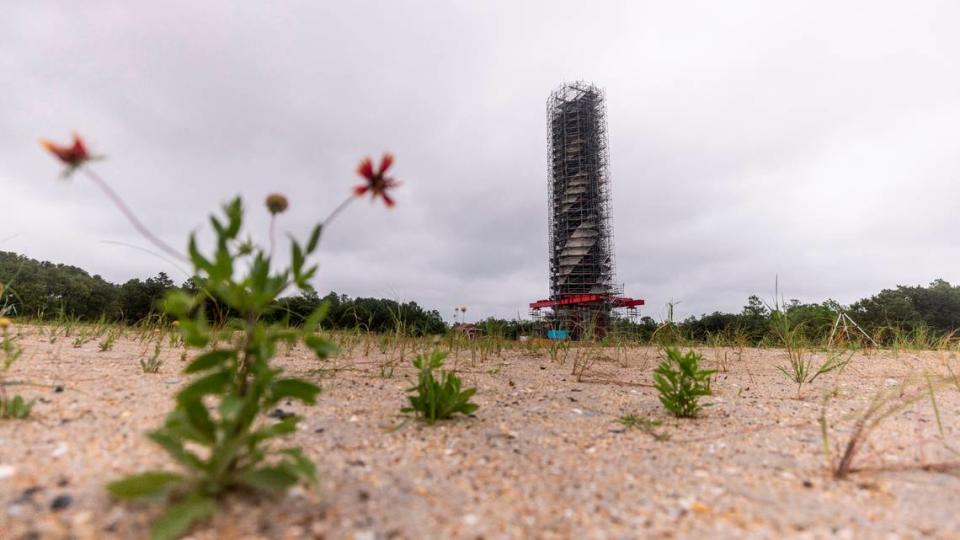
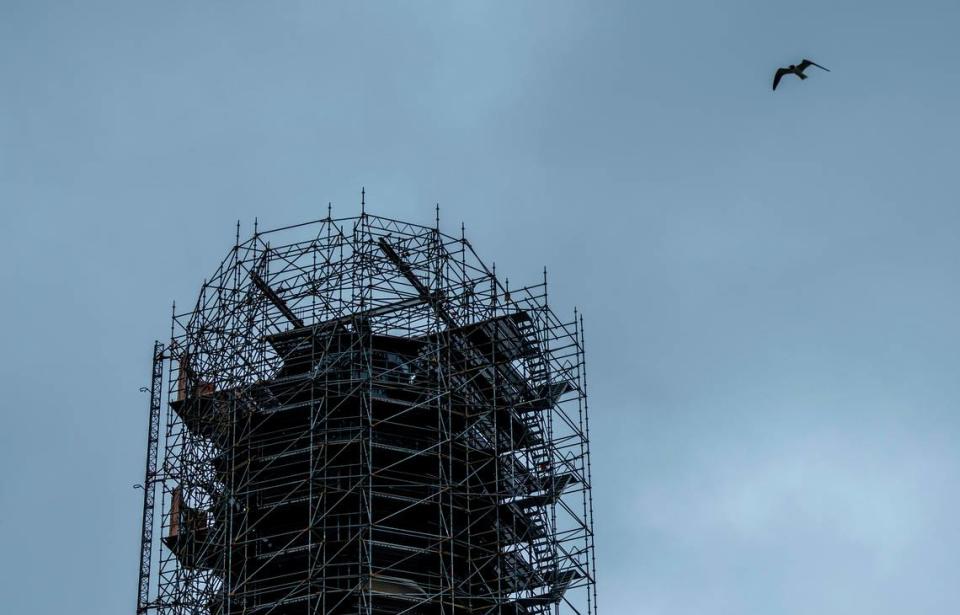
Which of NC’s historic lighthouses will be open for climbing this year? See our guide
12 must-see museums that dive into NC’s quirky history, from cats to Bigfoot to Andy Griffith


